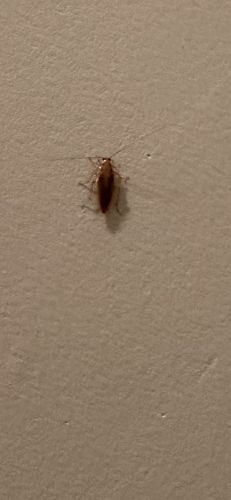German Cockroach
Scientific Name: Blattella germanica
Order & Family: Blattodea, Ectobiidae
Size: Typically 1.1 to 1.6 cm (0.43 to 0.63 inches) in length

Natural Habitat
Primarily indoor pests, found in warm, humid environments close to food and water sources. Common in kitchens, bathrooms, restaurants, food processing plants, and residential buildings.
Diet & Feeding
Omnivorous scavengers; eat almost anything, including human food, pet food, soap, glue, and even other cockroaches when food is scarce. They prefer fermenting foods and sugary substances.
Behavior Patterns
Nocturnal; hides in cracks and crevices during the day. Known for rapid reproduction and can infest quickly. They are highly adaptable and notoriously difficult to eliminate once established.
Risks & Benefits
Risks: German cockroaches are significant pests. They can spread bacteria (like Salmonella and E. coli), viruses, and parasitic worms. Their presence can trigger allergies and asthma attacks, especially in children, due to allergens in their saliva, feces, and shed exoskeletons. They contaminate food and surfaces. Benefits: Minimal to humans, considered solely as a pest.
Identified on: 8/28/2025